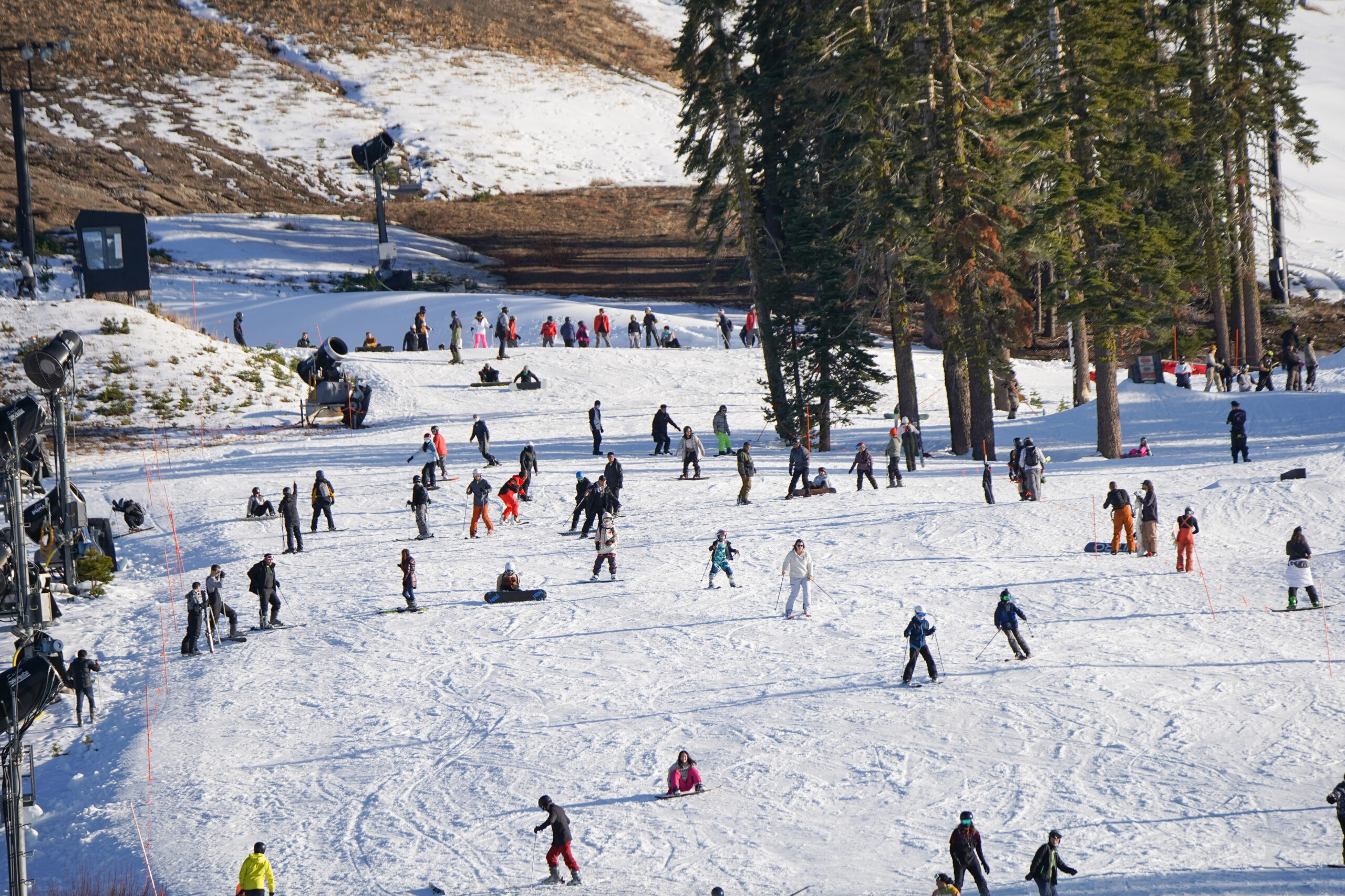San Francisco should expect a small amount of rain Thursday, and perhaps through Saturday, breaking the record-setting, two-month dry spell in January and February.
Showers are expected Thursday morning and throughout the day due to a weak rain system skimming the city, said ABC7 meteorologist Lisa Argen.
“We’re getting the leftovers from an atmospheric river that came from the Pacific Northwest,” she said.
But the light downpour isn’t expected to be a game-changer. San Francisco is expected to receive just .1 inches of rain, and there is no major rainfall on the horizon. This means Tahoe snow conditions will likely remain poor, allergies won’t be abated and the drought is only going to get worse.
Tahoe Ski Season
Tahoe is expected to get a small amount of snow late Thursday night through early Friday afternoon, according to the National Weather Service. People making the trek up the mountain should expect slick roads and possible driving delays. Snowfall is expected to be light, meaning ski conditions won’t get much better. Snowpack is currently 62% of average in Tahoe, and Argen said the only place in the western U.S. where snowfall is good is Colorado.
Allergies
If your allergies have been going haywire lately, it’s not just you. The dry, windy conditions in San Francisco have been hitting those with allergies hard, Argen said. Making it worse, some unseasonably warm weather has triggered plants to bloom early, which in turn raises pollen levels in the air and exacerbates allergies. Rain usually helps with “rinsing” out allergens in the air, Argen said, but we shouldn’t expect these showers to do much.
The Drought
A wet December and early January significantly helped the statewide drought. Back in November, more than 80% of California was in an “extreme drought,” but by mid-February that level dropped to just 1.39%, according to the U.S. Drought Monitor. But the latter half of February didn’t do the state any favors, as the numbers creeped up to 6.7% of California finding itself in “extreme drought.” And with no other storms on the horizon, Argen said, that number isn’t likely to get better.
